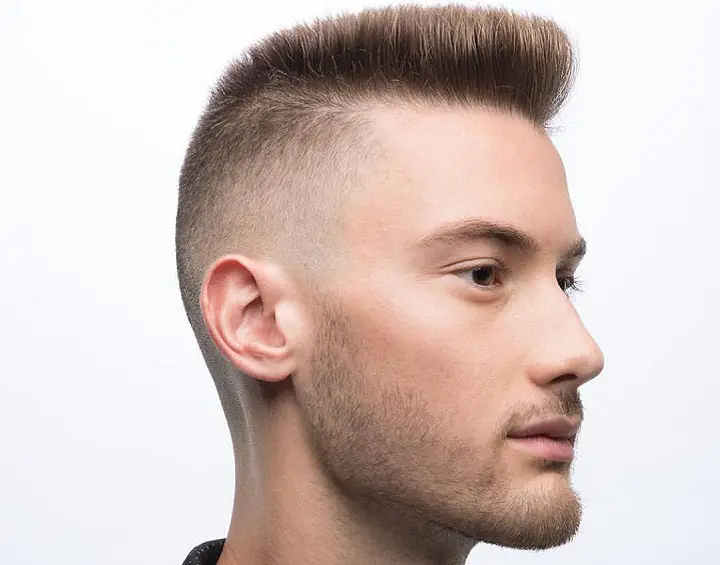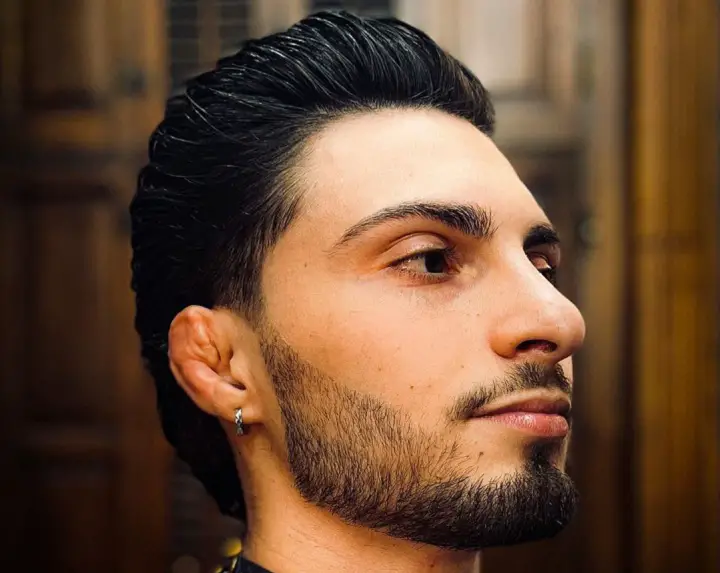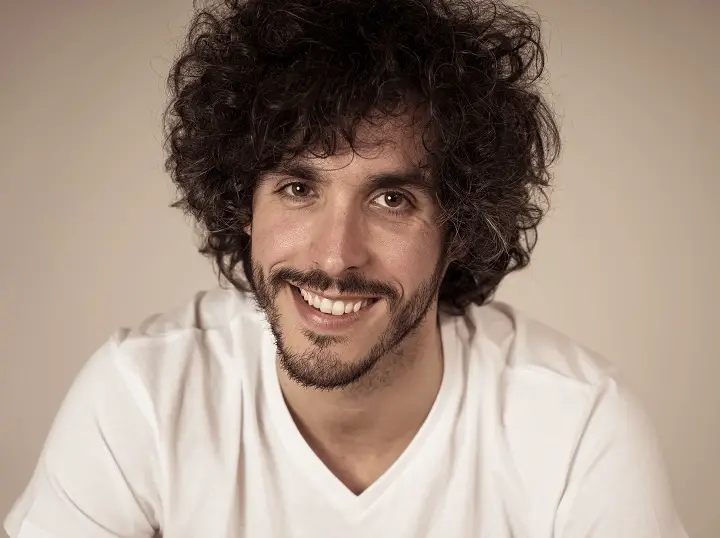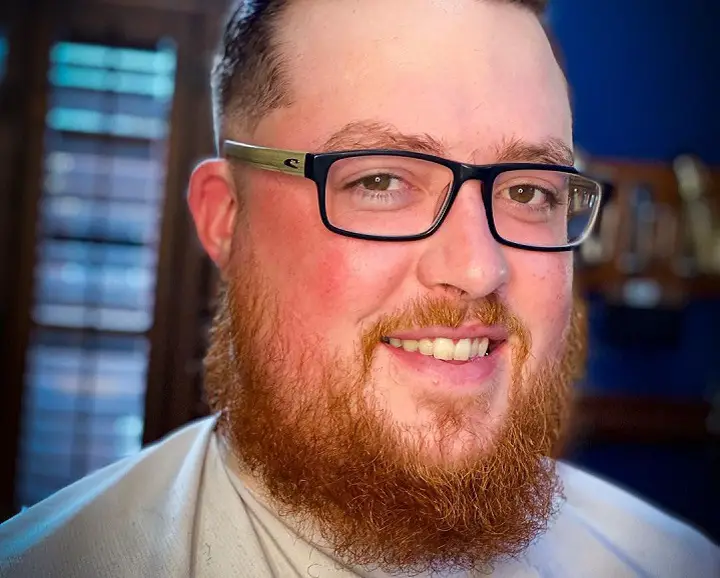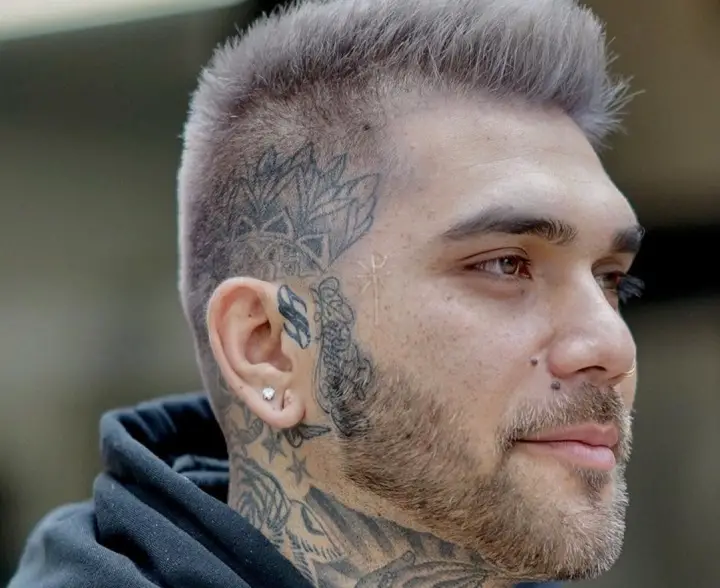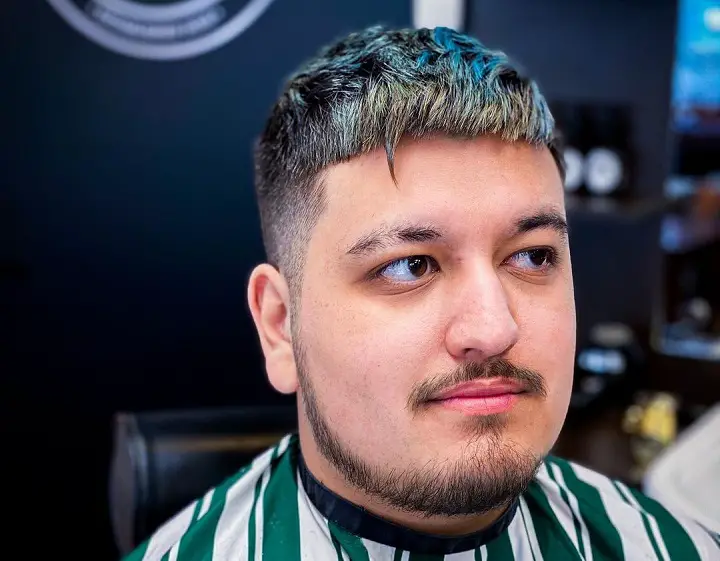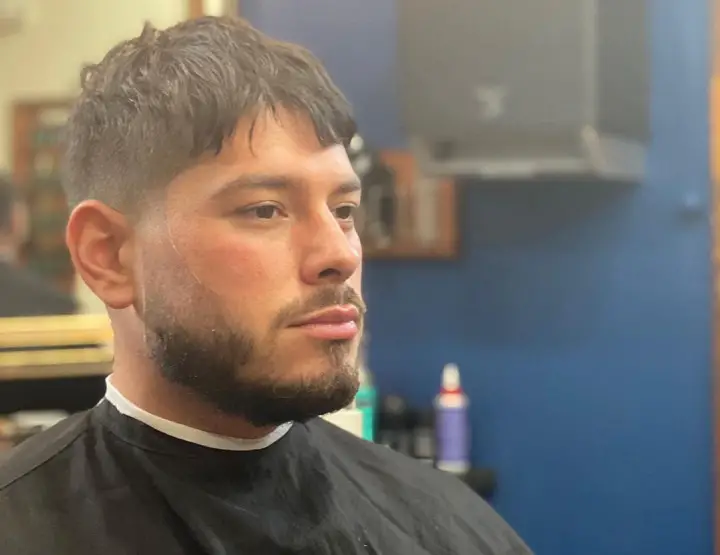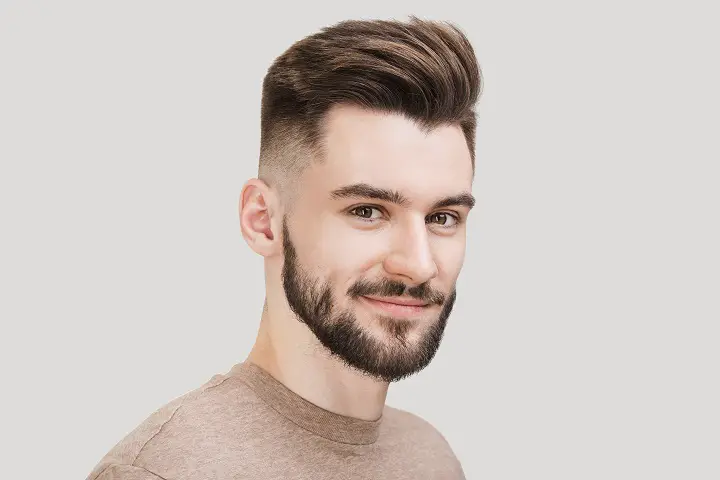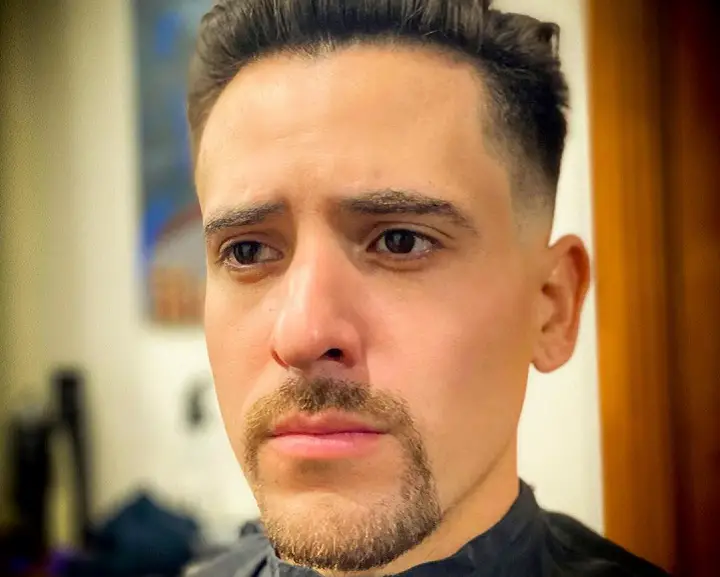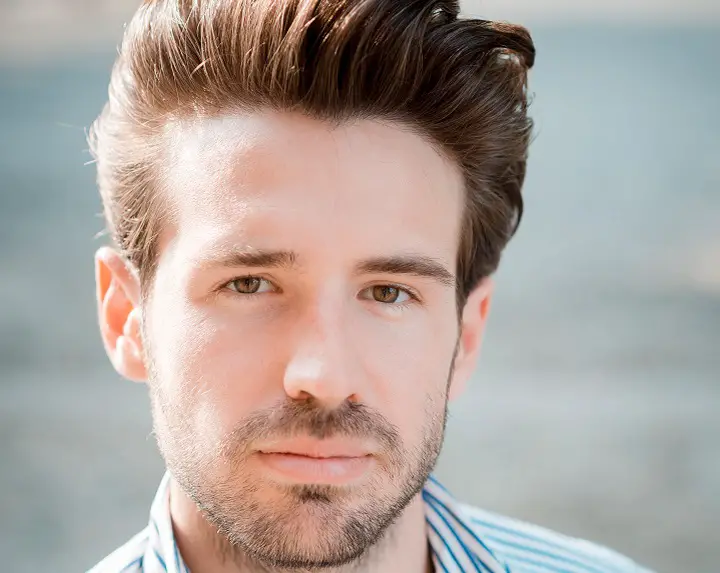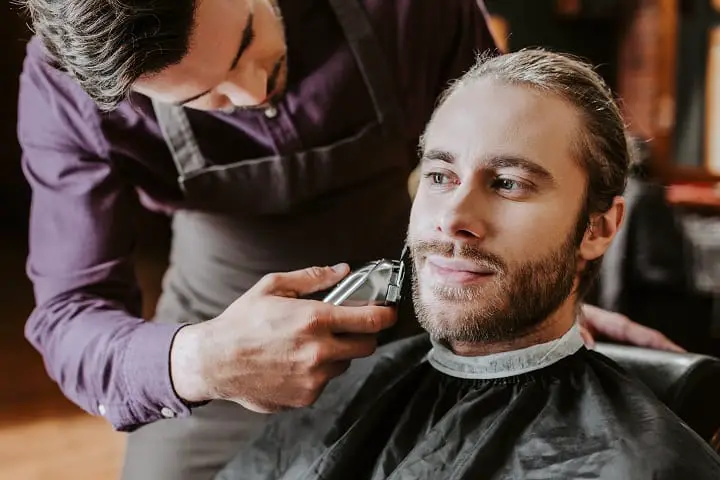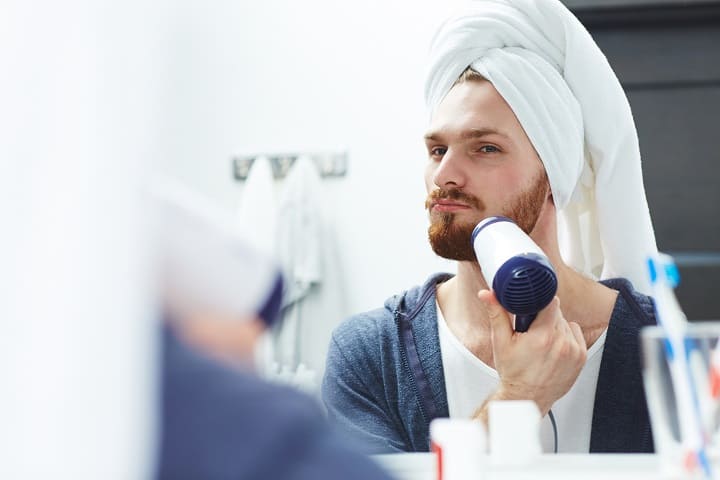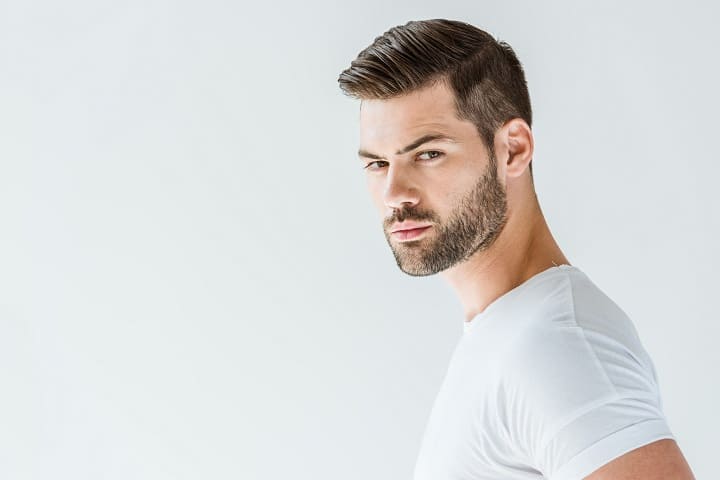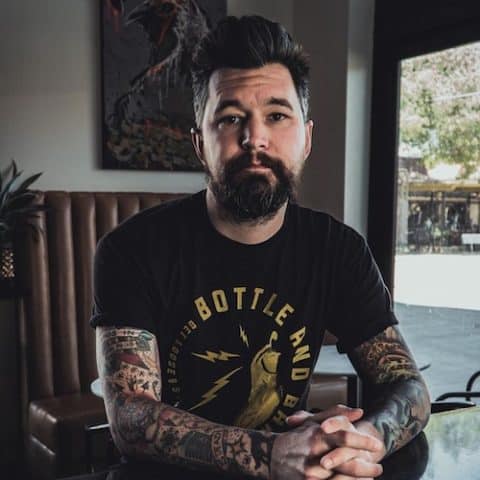We as guys usually envision ourselves having a masculine full mane of a beard, but the reality seeps in when all that we get is a thin beard.
Don’t get me wrong, a thin beard is nothing to be ashamed of, but most of us would rather grow a full beard that we can shape and take care of like it was our own baby.
A thin beard can be as attractive as a full one, you just need to learn how to style it correctly.
There are tons of ways and styles that can help us create a very attractive beard hair even if it is a little bit thin.
Also, some ladies love a guy with a shorter beard as it can look very attractive.
In order to learn the potential of a thin beard, we have created an article that can help you with the most obvious tips, do’s and don’ts and generally everything that you need to know as a guy with a thin beard.
Of course, if a thin beard isn’t really your thing, you’ll find proven tips on how to add more volume to it.
Table Of Contents
What Is a Thin Beard
Growing up every boy can’t help but look forward to the day they will grow a beard. This is the perfect passage to manhood.
You envision a full, thick and majestic beard that will be the envy of your pals.
Never in a million years would you ever imagine that you could grow a patchy or thin beard. And then reality hits.
Rather than a full, thick mane, your beard grows in weird patches that are thin and show no signs of filling up.
While character rather than a beard makes a man, every man wants to have a Viking kind of beard if they can.
Unfortunately, not everyone is as lucky and many of us have to deal with thin facial hair, which can discourage you from growing a beard at all. Every man is different mainly because of their genetic makeup.
The hair is different, skin color, the shape of your face and ultimately beards. A thin beard is characterized by patchy areas growth, bald spots, thin hair and excessive hair loss due to over-drying and over-brushing.
Beard growth is determined by a lot of factors that include your diet and hormonal factors. Age also determines how thick your beard will be. This is why your facial hair was thin during your teen years.
Luckily, it’s the 21st century and we have a solution for almost everything, including thin beards.
Beard growth products like minoxidil have for years helped men achieve thicker hair and healthier beards.
Best Thin Beard Styles
As I mentioned earlier, just because you have a thin beard doesn’t mean that it’s hopeless to grow a beard.
There are so many thin beard styles that you can choose from that will make you look polished.
Clipped Patches
Photo @anthonythebarber916
If your cheek hairs are not too patchy, this is the perfect beard style for you. Keep the trimmer to a number 1 or 2 setting when you are trimming. With this beard style, patches will remain but will not be visible because the beard has been trimmed uniformly.
You must shave the lower neck and high cheek lines to maintain a neat but still rugged and masculine appearance.
The beard style works well for men who are not into complex beard style and gives you a scruffy kind of laid back look.
Bristly and Sparing
Photo @chef_barber_jay
The bristly and sparing is the perfect example that a thin and patchy beard can still look good. It is one of the common beard styles that give the illusion of a full beard when well-maintained.
Clean up the neck and cheek lines and then trim the hairs to a uniform length to add structure and symmetry.
This is the perfect style to rock as you wait for your beard to grow out completely, which can take as many as twelve months.
Cheekbone Highlight
Photo @chef_barber_jay
For some men, the cheek hairs tend to grow high and start coming down from a shallow angle that doesn’t join with the mustache.
To get the most out of this kind of growth, shape the beard to its natural growth and ensure that you clean up the edges.
Doing this accentuates the cheekbones, which in turn gives you’re a more masculine appearance.
Patchy Goatee
Photo @chef_barber_jay
If your chin and mustache hair is coming in strong, just leave them to grow out. While at it, ensure that you keep the hair uniformly trimmed to make the hair look denser than it is. Allow the hairs around the jaw to grow out a little but keep them constantly trimmed to a subtle length.
This contours the jaw and gives your face a more chiseled appearance. The hair around the jaw will also help draw the attention away from the rest of your face to the goatee.
Scruffy
This is the ideal style for men who have softer facial features. A patchy and scruffy beard tends to contrast the delicate features giving your face a unique angle. And all you need to do is to give the hair time to grow out.
This beard style requires a little maintenance, but those small upkeep habits will make the scruff look well-kept.
Keep the skin underneath and the beard clean, and then, from time to time, use beard scissors to clean up the long hairs that may seem out of place.
Thick Chin Strap
This is the best style for anyone who can grow a strong beard around the mustache and jawline but doesn’t grow any hair on the lower neck and high on the cheeks.
To maintain this look, shave the high parts of the cheeks and the neck and only leave the beard to grow along the jawline.
This accentuates the jawline.
However, you need to ensure that you keep the beard to a short length to minimize the appearance of patchy spots.
Soft and Light
If your beard grows in patches and happens to be naturally soft, you need to keep the mustache, jawline and neck area tidy to pull off this look. Also, ensure that you keep the hairs shortly trimmed, which will give the beard a well-structured appearance.
Overgrown
Photo from: PopularImages/depositphotos.com
If you have a lot of confidence despite thin facial hair, leave the beard to grow out, allowing the stronger parts of your facial hair to cover up the patches.
Invest in a high-quality beard brush and beard comb that you need to use at optimal angles to cover up the patches as much as you can. Incorporate beard products, also like beard balm, to add some hold and to maintain concealment.
With time, the patches should become less noticeable.
Thin Beard Styles to Avoid
Just because we said that you should consider growing a beard even with thin hair doesn’t mean that you have the freedom to experiment with every beard style out there.
Here are beard styles that you should not attempt on a thin beard no matter how tempting it is:
Chinstrap
The chinstrap was popular in the early 2000s, but the style has gone out of fashion.
Unless you are auditioning for a role in a reality show that requires you to have a chinstrap, it’s just a bad idea, especially with your thin hair.
Horseshoe
Photo @anthonythebarber916
The horseshoe beard style gives off a masculine as well as a rugged vibe. If you are really into this beard style, at least try and stick to the classics. Any freestyles on the horseshoe mustaches are just a terrible idea and something you shouldn’t have on your face in 2021.
Beard Figures and Patterns
There was a period when Ludacris rocked perfectly shaped triangle sideburns that are hard to forget.
The style looked perfect on him, but then it’s Ludacris. The beard style caught on for a while.
It’s not a bad idea, but Ludacris is an entertainer and it makes sense why he would revamp his look like that.
You are not, so just don’t! If you go for such stylistic stunts today, especially with a thin beard, you will only be inviting ridicule rather than looking good.
Photo from: Featureflash Photo Agency/shutterstock.com
Just Letting It Grow
Photo @chef_barber_jay
There is nothing wrong with allowing your beard to grow out. Problems arise when the growth takes over your face like seaweed.
No matter how rugged you are, you want to maintain a neat and clean looking beard, so consider investing in trimmers and beard scissors.
Photo @anthonythebarber916
Photo @barbershopestudiollc
Photo @shrunknheads
Photo @anthonythebarber916
Photo @dladybarberr
Photo @chef_barber_jay
Photo @chef_barber_jay
Photo @chef_barber_jay
Photo from: PopularImages/depositphotos.com
What Are The Benefits
While a thin beard may be viewed as a disadvantage by many men, it has a few benefits that you should not overlook.
Hygienic
Thick and full beards are usually associated with dirt, sweat and other unsavory things that may find their way into your mane.
You never have to worry about looking unkempt or unhygienic with a thin beard because such a beard doesn’t attract as much dust and food particles when you are eating.
Fewer Beard Products
If you want to maintain a healthy and good looking beard, then you need to add beard products into your routine.
Such products include beard oil, beard wax, beard balm, beard shampoo and conditioner.
With a thicker beard, you tend to use more of these products due to the volume.
This means that with a thinner beard, your beard products are likely to last longer because you only need to use a little of each.
So Many Beard Styles to Choose From
Contrary to popular belief, styling a thin beard is just as easy as styling a thicker, fuller beard.
While the latter has so many styles to choose from, several styles apply to a thinner beard.
A simple stubble or a goatee are some of the styles you can choose from and still look dashing in a suit or casual wear.
Easy to Maintain
A thicker beard comes with a lot of demands when it comes to maintenance. For instance, you need to clean your beard, trim it regularly and apply beard products every day to maintain the shape. With a thin beard, there is very little you can do with it.
How Does a Thin Beard Work
Very few men can grow thick and full manes and what this means is that a majority of us are forced to settle for short hair and even thin beards. A thin beard should not be grounds to give up on beard growing.
This is considering that there are many remedies that you can use to thicken your beard.
However, at the end of the day a thin beard is simply a beard that doesn’t grow to a full-thickness.
It may grow in patches that don’t fill up ever or very fine that it appears thin. Men who have light-colored hair have beards that appear thinner. Thinner beards also result from excessive hair loss.
This can discourage you from growing a beard but before you give up on your beard growing dreams, consider the different styles at your disposal. Basically, a majority of styles that work for short beards work well for thin beards as well.
Pros and Cons
While a thin beard is frowned upon, if you can’t grow a thicker and fuller beard, you have no choice but to be content with what nature has given you and that is a thin beard.
So, here are the pros and cons of growing a thin beard:
Pros
- Thinner beards are very easy to maintain since they don’t require a lot of trimming and styling.
- Thinner beards are professional looking especially if you work in a field that requires short beards.
- A majority of styles that apply to shorter beards, as mentioned earlier, might also apply to your thin beard.
- Thin beards don’t trap as much dirt and sweat as thicker and fuller beards.
- Thinner beards also mean saving up on beard products like beard oil and shampoo.
This is because you only use a small percentage of these products compared to what you would use if your beard were thicker.
Cons
- Thinner beards, especially when not well-styled, can make you look weird and not to mention unkempt.
- Thin beards are not the greatest confidence booster and they might discourage you from ever-growing a beard.
- Thin beards also make you look younger than you would want to, especially when trying to impress a love interest.
This is especially considering that thin beards are expected in younger males and not adult men.
Types of Beard Thinning
When it comes to beard thinning not all thinning is the same. Whether you have always had a thin beard since your teen years or have just noticed that your beard has started thinning, here are the different types of thinning and how to deal with each:
Finer Beard Hairs
It’s not every man who can grow a thick beard as well as coarse beard. Instead, some of us have to deal with finer hair growth.
Naturally, finer hair, no matter how plenty, will always appear thinner than coarse hair.
Finer hairs are common when your beard begins to sprout, but this can transition even to adulthood for some men.
Patchiness
Like all hair on the body, facial hair differs from one person to another regarding the growth rate.
When facial hair starts sprouting in your teenage years, you may notice that some areas are completely devoid of hair.
These patches fill up as you continue to mature. However, some men continue to experience partial facial hair growth that can look weird if you are an adult. When hair grows in patches, naturally, your beard will appear thinner.
There are several ways of dealing with a patchy beard look, depending on where the patches are located and the particular style you are going for. A simple way of dealing with this kind of patchiness is to allow the surrounding hair to grow to cover the bald spots.
Another great way of dealing with a patchy beard is to trim and style the beard to incorporate the baldness.
This is helpful when the patchy spots are located on the neck and cheek areas.
Lighter Colored Beards
Men who have light-colored beards also experience beard thinness no matter how thick the beard is.
Basically, light-colored beards tend to appear thinner than darker hair.
If your beard appears thinner due to the color, the solution is as simple as dying it to a darker color.
Excessive Hair Loss
Hair grows in cycles, including the hair on your face. Naturally, when the cycle ends, hair is bound to fall away to create room for new hair growth. If your hair falls away at a higher rate than normal, then the chances are that your beard will start thinning in time.
Causes and Treatments
Thin beards are a real struggle and can discourage any man from growing a beard at all.
So, the question is, what causes beards to grow thin in some people and not others?
Genetics
When it comes to thinning beards and other beard growth issues, the first culprit is always genetics.
Your thinning facial hair might be because you are genetically predisposed to have thin hair.
Genetics can cause your beard to grow in weird ways. You could have bald spots, patches, thin hair and limited beard length.
If some family members have thin or patchy beards, then you don’t need to look further for the cause of your thinning beard.
With genetics, there is very little you can do to change your situation. It doesn’t, however, mean abandoning the idea of growing a beard completely. As mentioned earlier, there are ways you can work around your thin beard to make it not look as thin.
Over Drying (Heat)
Another common cause of thinning beards, especially when it happens out of nowhere, is using excess heat when you are styling your beard. A small amount of heat is necessary because it makes styling easier.
However, avoid using a lot of heat and limit the heat styling to maybe once a month. A hair straightener is never a good choice when you want to style your beard. This is because the heat compression can damage the hairs.
Rather use a blow-dryer if you must on a lower heat setting and avoid holding it to one place for a long period.
Product Overuse
Overusing some products as well as using products that contain harmful ingredients can, in the long run, cause your beard to start thinning, become brittle and dry.
Hair goes through a natural cycle as it grows and using certain products can quicken the process and cause excessive dryness, which could lead to hair dying off quicker than it should.
When it comes to beard grooming products, you are better off going for products that contain natural ingredients and avoid using too much of these products.
Too Much Brushing
Brushing your beard has so many benefits, like removing tangles, dead skin cells, and food particles that may be embedded in the hairs.
As you are brushing, just like with the hair on your head, some hairs are bound to fall off, which is completely natural.
As such, when you brush more times than is recommended you are going to start losing hair quicker, which will cause your beard to get thinner and thinner with every brushing. As such, try and limit your brushing to once or twice a day to avoid over-brushing.
While at it also invest in a high-quality beard brush and comb, preferably one made of natural fiber rather than plastic.
Stress
Ever heard that stress is not good for your health? The same can be said about your hair.
Too much stress has been shown to accelerate hair loss from all areas of the body, including the beard.
Stress usually raises your cortisol levels (the stress hormone), which in turn leads to a lowering of DHT and testosterone levels, which are very important for facial hair growth.
Limit stress in your life by avoiding situations that may cause you to be stressed if you don’t want to lose any more hair.
Health Issues
Sometimes hair thinning can result from underlying health issues, some of which might lead to permanent hair loss.
If you start experiencing hair thinning and are sure your genes are not to blame you need to see a professional rule out any serious health issues. The first health issue that may cause your beard to be thin is skin damage and infection.
Your skin needs to be healthy so that hair can grow. When you suffer from any kind of skin damage or an infection like ringworms and dandruff, your beard growth rate is likely to decline and hair will start thinning.
Alopecia barbae is a health condition that affects the hair follicles and is another cause of hair thinning.
The hair follicles are attacked, which leads to hair thinning as well as bald spots.
Chemotherapy will also cause hair to thin or fall out completely and that includes the hair on your face.
Since chemotherapy is an intense chemical treatment, hair loss and thinning are inevitable, but your beard should grow back and thicken once you are done with treatment.
Radiation treatment is similar to chemotherapy and it’s the leading cause of hair loss in cancer patients.
People who are going through radiation treatment will most likely lose hair and that includes facial hair.
Iron deficiency anemia has also been linked to hair loss and hair thinning. Individuals who suffer from this medical condition will experience varying degrees of hair loss, which should go away with the right treatment.
Poor Grooming Routine
Poor beard grooming and poor hygiene can lead to conditions that may cause your facial hair to thin out.
Establish good and regular hygiene by taking time to actually clean your beard.
And while at it use the right beard products for the best results. A dirty beard is not only unsanitary but could be the reason why your facial hair is falling off little by little.
Methods to Make It Appear Fuller
If you suffer from beard thinning, bald spots and patches, don’t freak out.
There are certain measures you can take to give your beard a fuller appearance and they include:
Shorten Your Beard
While shortening your beard is the last thing on your mind, especially considering how much of a struggle it has been achieving that length, in this case, it may be necessary. If you have thin or sparse facial hair, as the beard grows, this becomes more noticeable.
Trimming is the best way to make it appear thicker. Think about this: you are not trimming it forever – just until the growth improves and the growth doesn’t look as thin or sparse.
Add Texture
Adding texture to your beard is the best way to make it appear thicker and there are two products that you can use, dry shampoo and sea salt spray.
Dry shampoo, when a user applies a thin yet slightly thick powder layer to the beard that adds to the volume and makes the beard look thicker than it actually is. Sea salt has been used for years to achieve textured beachy waves on the head hair.
The same can be applied to the beard to add texture and thickness. Here is one thing you need to keep in mind, though sea salt spray and dry shampoo, when used on facial hair can have drying effects on both the beard and the skin underneath.
As such, if you are planning on using either of the products, be sure to condition and clean your beard to avoid that excessive dryness.
Blow-Dry Your Beard
Over-drying is one of the leading causes of beard thinning. However, before you throw that blow dryer away, using it correctly can have the opposite effect – adding texture and thickness!
If you are worried about drying the beard too much, you can use a heat protectant every time you use a hairdryer to help lock in moisture.
Use Hair Fibers
This is another trick that men with thin beards use to camouflage the thinning, bald spots and even patches.
Hair fibers are keratin fibers that mimic actual hair.
They are statically charged to stick to the existing hairs, which results in a much thicker and fuller mane.
How to Improve Beard Thickness
Step 1 – Take Biotin supplements
There never is the right food for growing a beard. However, if you suspect that you are not getting enough biotin from the food you are eating it may be time to consider biotin supplements. Biotin has been proven to aid in hair growth.
Step 2 – Condition Your Beard
One of the secrets to growing a thicker mane is ensuring that your beard and the skin underneath are conditioned well.
Beard and skin dryness are the leading causes of thinning facial hair, patches and bald spots.
So, to speed-up your beard growth use the right beard conditioners. While at it, you are better off investing in a conditioner that contains natural ingredients.
Step 3 – Use a Beard Brush
One of the tools that you should never miss in your beard grooming kit is a beard brush.
A quality natural fiber brush is vital in stimulating hair follicles, distributing natural oils and products throughout the hairs and training the beard.
A beard brush will also come in handy in exfoliating the skin to remove dead skin cells and improving circulation, which will lead to healthier growth.
Step 4 – Develop a Healthy Grooming Routine
When it is all said and done, the best way to achieve and maintain thick and full beard growth is to develop a great grooming routine.
It encompasses all the steps discussed above, but really it’s all about striking a balance.
When you maintain a regular grooming routine, your hair follicles and the skin don’t need to keep re-adjusting but will instead be in a better position to promote stronger and healthier facial hair growth.
Besides grooming the beard, you also need to take care of the skin underneath and it all starts with finding the right beard products.
Natural beard oil, for instance, will keep your hairs moisturized and will give your beard a healthy shine.
On the other hand, the best products like beard balms keep your beard in shape when styling.
The bottom line is, find simple beard products that contain quality ingredients and incorporate them into a regular grooming routine.
How to Style a Thin Beard
Step 1 – Allow the Beard to Grow
Ever heard of the four-week rule for growing a thicker beard? Well it basically involves giving your beard time to grow out before you start trimming or styling it. For most men, patchy beards result from some of the hairs growing at a slower rate.
Hair even on the head grows at different rates. Allowing those whiskers that are yet to reach their full potential do so will eventually fill up the patchy spots. Besides, longer hair whiskers tend to create an illusion of thickness and fullness.
Step 2 – Even Out the Beard
Once you have allowed your beard to grow undisturbed for a couple of weeks it will probably look messy and unkempt.
The best way to style your thin beard is to even out the hairs.
Begin by combing the beard so that all the hairs fall in place, which should actually eliminate some of the patchiness.
The next step involves choosing the right trimmer and setting it to medium or long length.
The idea behind this is to trim all the hairs to the same length. If you don’t have a beard trimmer, there are different types of beard scissors that you can use. When you are done, your beard should look cleaner and neater.
When you are trimming, be very careful not to trim too much because it would mean enduring a few more weeks of unruly hairs as your beard grows.
Step 3 – Comb and Outline the Beard
Combing the beard makes it look more consistent and fuller. Shape the hairs by cleaning up the loose hairs with scissors and then outline it for a more polished look.
FAQ
What is a thin beard called?
A thin beard is hair that grows thin, in patches, bald spots or is light-colored that it gives the illusion of thinning.
Will a thin beard fill out?
Yes, a thin beard can fill out, but it takes time and patience. There are natural remedies like castor oil, that you can use to aid in the process.
Why is my beard so thin?
There are so many reasons why your beard could be so thin. For one, a beard is inevitably thin when you begin sprouting facial hairs in your teen years. However, if the thinness carries on to adulthood or happens suddenly it could be due to several reasons.
Genetics, Genetics, over-drying due to too much heat when styling, product overuse, too much brushing, stress, underlying health issues, and poor grooming routine have all been linked to beard thinning.
Do beards become thinner with aging?
As we age facial hair becomes thinner. This is a natural process caused by hair follicles becoming smaller, which eventually causes beard hairs to become thinner. This thinning also results from DHT attaching to the hair follicles, which prevents nutrients from reaching them.
Will shaving help you get rid of a thin beard?
One of the greatest myths about hair growth is that shaving causes hair to grow thicker and fuller.
If you have a thin beard, shaving it will not get rid of the thinness. Your facial hair will still grow back thin.
Exercise, a healthy and balanced diet and a great grooming routine are the best ways to deal with facial hair thinning.
Conclusion
Whether you have always struggled with a thin beard or it’s something that you have just noticed, one clear thing is that a thin beard is nothing to freak about. We live when there is a solution for almost anything and the same goes for thin beards.
You can still rock a good-looking beard even if your hairs grow out thin by adapting to the styles meant for thin beards.
Using castor oil, beard oil and beard conditioners can help reduce the thinness or mask it.
Anthony Giannotti is a senior writer and editor for Beardoholic and a licensed barber for more than 13 years. He owns 3 barbershops and has his own hair care product line that is sold in barbershops worldwide. Known for his impeccable technique and skills, Anthony is an expert in hair and beard care and he knows the best products and tools to get rid of all beard problems and have an amazing beard.


